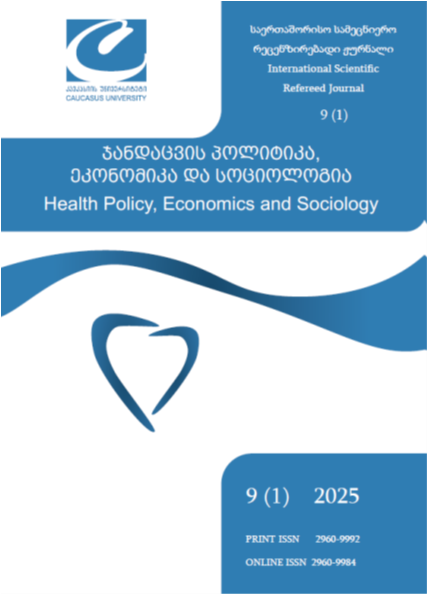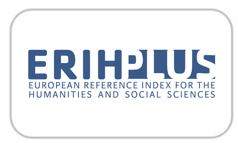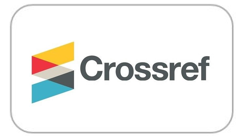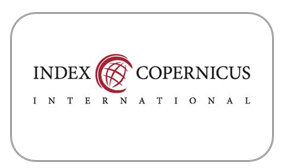ფარმაცევტული პროდუქტის გარემოზე ზემოქმედების რისკების მართვა: საერთაშორისო პრაქტიკების შედარებითი მიმოხილვა
DOI:
https://doi.org/10.52340/healthecosoc.2025.09.01.06საკვანძო სიტყვები:
ფარმაცევტული ნარჩენები, გარემოს დაბინძურება, ნარჩენების მართვაანოტაცია
შესავალი: ფარმაცევტული ნარჩენები მნიშვნელოვანი წყაროა გარემოს დაბინძურებისათვის. წამლის განადგურების არასწორი პრაქტიკა იწვევს აქტიური ფარმაცევტული ნივთიერებების გამოყოფას წყალში და ნიადაგში, რაც საფრთხეს უქმნის ბიომრავალფეროვნებას, ხელს უწყობს ანტიმიკრობული რეზისტენტობას და წარმოადგენს სერიოზულ რისკს საზოგადოების ჯანმრთელობისთვის. ამ რთული და მზარდი გამოწვევების მოსაგვარებლად საჭიროა კოორდინირებული, მრავალმხრივი და სისტემური მიდგომა, რომელიც ემყარება მტკიცებულებაზე დაფუძნებულ პოლიტიკას და მდგრად პრაქტიკას. მეთოდოლოგია: კვლევა უკავშირდება შერჩეულ ევროპულ ქვეყნებში ფარმაცევტული ნარჩენების მართვის პრაქტიკებისა და საკანონმდებლო ჩარჩოების შედარებით ანალიზს, ვადაგასული და გამოუყენებელი მედიკამენტების შეგროვებისა და განადგურების სისტემების ეფექტურობის შეფასებას, აგრეთვე აფთიაქების, სახელმწიფო უწყებებისა და ფარმაცევტული ინდუსტრიის როლების განსაზღვრას სხვადასხვა ინსტიტუციურ და სოციალურ-ეკონომიკურ კონტექსტში. შედეგები: ევროპულ ქვეყნებში ფარმაცევტული ნარჩენების მართვის სისტემების შედარებითი ანალიზი აჩვენებს ორგანიზაციის, მთავრობის ჩართულობისა და დაფინანსების მექანიზმების მნიშვნელოვან განსხვავებებს. ცენტრალიზებული მოდელები, როგორიცაა საფრანგეთი და ესპანეთი, საჯარო-კორპორატიული თანამშრომლობის მხარდაჭერით, კარგად რეგულირდება. დეცენტრალიზებული სისტემები, ფინეთის მაგალითზე, ხაზს უსვამს ადგილობრივ მთავრობათა მონაწილეობას. ქვეყნები, როგორიცაა უნგრეთი და რუმინეთი, ჯერ კიდევ გარდამავალ ფაზაში არიან, მხარეთა ჩართულობისა და რეგულაციის აღსრულების გამოწვევებით. დასკვნა: ფარმაცევტული ნარჩენების მართვის პრაქტიკის გასაუმჯობესებლად კვლევა რეკომენდაციას იძლევა საზოგადოებრივი განათლების გაძლიერების, ინფრასტრუქტურაში ინვესტიციების განხორციელების, პროფესიული გადამზადების ხელშეწყობის ასპექტებზე და წარმოაჩენს ყველა დაინტერესებული მხარის ჩართულობის აუცილებლობას ერთიანი სამართლებრივი ჩარჩოს შემუშავებისთვის. აღნიშნული ნაბიჯები აუცილებელია როგორც გარემოს, ისე საზოგადოების ჯანმრთელობის დაცვისა მიზნებისთვის და გლობალურ დონეზე, ფარმაცევტულ სფეროში უფრო პასუხისმგებლიანი პრაქტიკის ხელშესაწყობად
წყაროები
• Act on Pharmaceuticals. (2020). Czech Republic: No. 378/2007 Coll., as amended in 2020. Retrieved from https://www.zakonyprolidi.cz
• Assinde. (2016). Agreement with the Ministry for the Environment on the management of pharmaceutical waste. Retrieved from https://www.assinde.it
• Cyclamed. (2020). French Drug Take Back System. Retrieved from https://circabc.europa.eu/d/d/workspace/SpacesStore/50e71cdb-4cd1-40b1-b342-0d0799087c7c/Day%202_EPR%20for%20solid%20pharma%20waste_Cyclamed.pdf
• Cyclamed. (2021). Pharmaceutical Waste Management in France.
• EAHP. (n.d.). PharmaSwap: A pioneering healthcare initiative reducing medication waste. European Association of Hospital Pharmacists. Retrieved from https://www.eahp.eu/gpis/pharmaswap-pioneering-healthcare-initiative-reducing-medication-waste-and-promoting
• Environmental Protection Agency (EPA). (2023). The impact of pharmaceuticals released to the environment. https://www.epa.gov/household-medication-disposal/impact-pharmaceuticals-released-environment
• European Environmental Bureau. (n.d.). The problem of pharmaceutical pollution. Retrieved May 3, 2025, from https://eeb.org/the-problem-of-pharmaceutical-pollution/
• European Journal of Health Law. (2021). Innovative public health initiatives in pharmaceutical waste management: A review of EU country practices, 28(3), 215–230. https://doi.org/10.1163/15718093-28030001
• Fimea – Finnish Medicines Agency. (2024). Environmental classification system for pharmaceuticals. Retrieved from https://www.fimea.fi/web/en/environmental-impact
• Health Care Without Harm Europe. (2013). Unused Pharmaceuticals: Where Do They End Up? Retrieved from https://europe.noharm.org/sites/default/files/documents-files/4646/2013-12%20Unused%20pharmaceuticals.pdf
• IFET (Institute of Pharmaceutical Research and Technology). (n.d.). About Us. Retrieved from https://www.ifet.gr/167/en/About-Us/
• Johnson, C., & Bell, S. J. (2022). Linking emerging contaminants to production and consumption practices. WIREs Water, 9(1), e1615. https://doi.org/10.1002/wat2.1615
• MedsDisposal. (n.d.). About Us. Retrieved from https://medsdisposal.eu/about-us/
• NAMMDR. (2020). Pharmaceutical Waste Management in Romania.
• PGEU. (2019). Best Practice Paper on Green and Sustainable Pharmacy in Europe. Pharmaceutical Group of the European Union. Retrieved from https://www.pgeu.eu/wp-content/uploads/2019/11/PGEU-Best-Practice-Paper-on-Green-and-Sustainable-Pharmacy-in-Europe.pdf
• PGEU. (2019). MedsDisposal Campaign: Raising Public Awareness on Pharmaceutical Waste.
• Recyclomed. (2021). Pharmaceutical Waste Management in Hungary.
• Shashiashvili, N. (2025). The strategic role of the pharmacist in environmental risk management. Georgian Scientists, 7(2), 184–195. https://doi.org/10.52340/gs.2025.07.02.17
• SIGRE. (2021). Pharmaceutical Waste Management in Spain.
• SIGRE. (n.d.). How the System Works. Retrieved from https://www.sigre.es/en/how-it-works/
• Slovak Chamber of Pharmacists. (2016). National awareness campaign on pharmaceutical waste disposal. Retrieved from https://www.sleks.sk
• VALORMED. (n.d.). Quem Somos. Retrieved from https://valormed.pt/quem-somos/overview/
• Wilkinson, J. L., Boxall, A. B. A., & Kolpin, D. W. (2022). Pharmaceutical pollution of the world's rivers. Proceedings of the National Academy of Sciences, 119(8), e2113947119. https://doi.org/10.1073/pnas.2113947119














